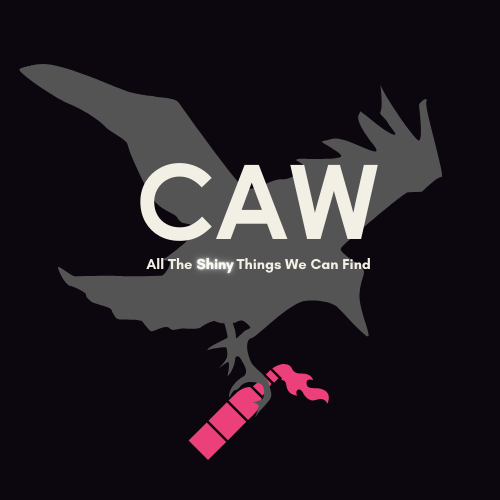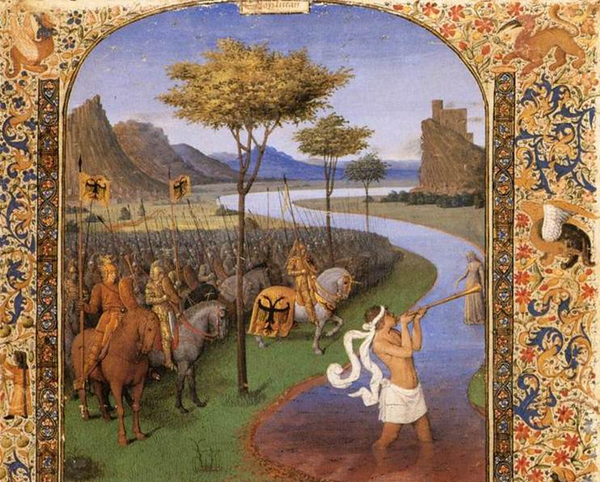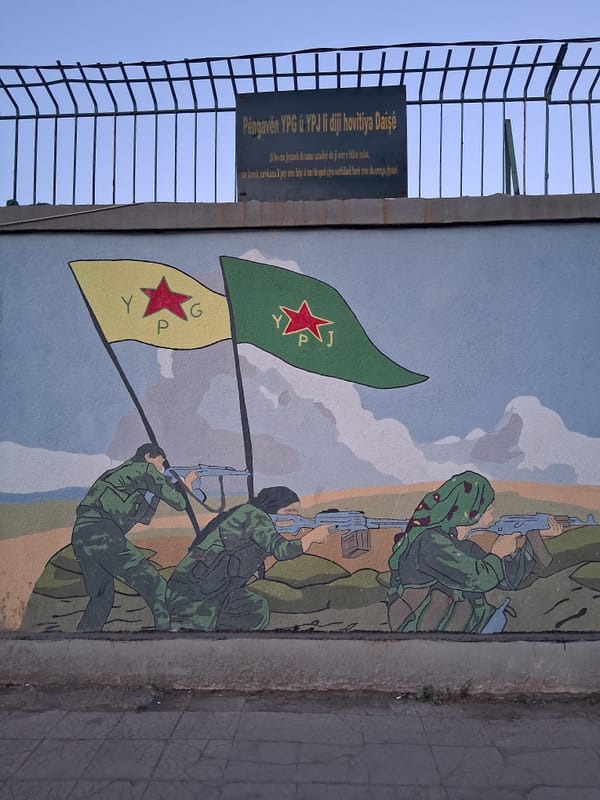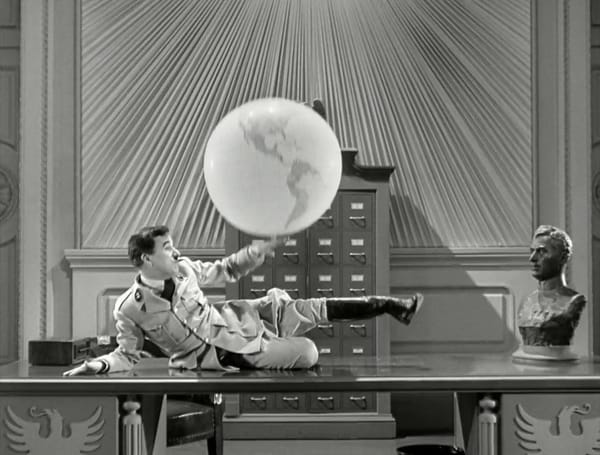The Fires This and Every Time
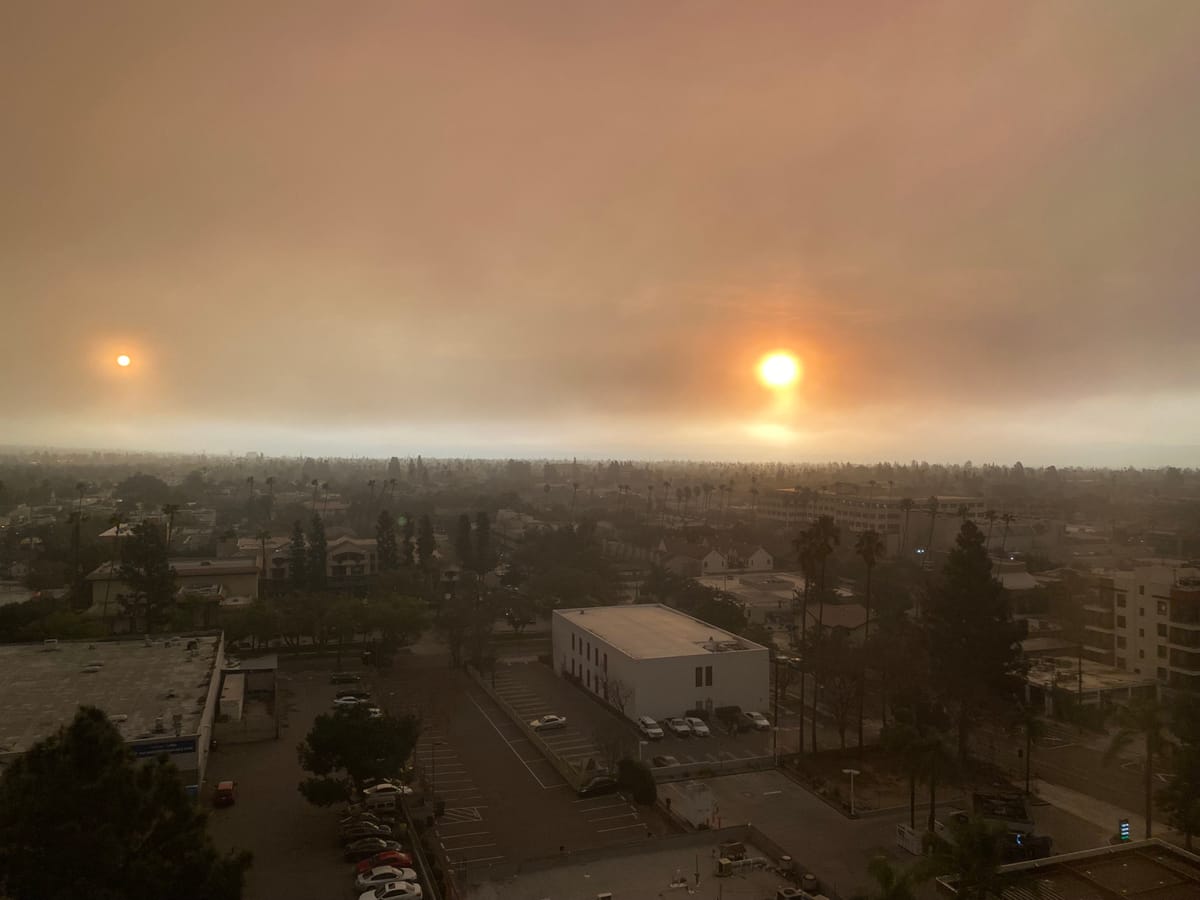
There’s a particular kind of emotional chaos that comes with living in the fire-prone west. Fire behavior can be erratic, unpredictable. There are no meteorologist predictions of when the firestorm will pass. Flames climb hillsides, winds send embers flying—sometimes for miles—and there’s no guarantee where they’ll land, which homes will be consumed, how long the smoke will press down on towns and cities and forests and freeways, how long the ash will impact crops and watersheds. Fun fact: something I learned during one of my local fires is how household chemicals morph into new chemical compounds when two or more toxic substances burn together. The health impacts of these new chemicals are unknown and they seep into the soil and watersheds and can cause all sorts of health issues that no one quite understands until they manifest. It’s not Octavia Butler level sci-fi. It is our current reality.
There’s also a special kind of panic that pushes one along during massive fires that take homes and cars and lives and neighborhoods. Sometimes the panic feels spirally or directionless, but the propelling motion always moves us (me) with half-drawn breaths and a slight (or major) sense of mania, like prey desperate to outsmart a really fucking fast, methed out predator. Except the predator is climate change. And the prey is you. And your community. And our planet.
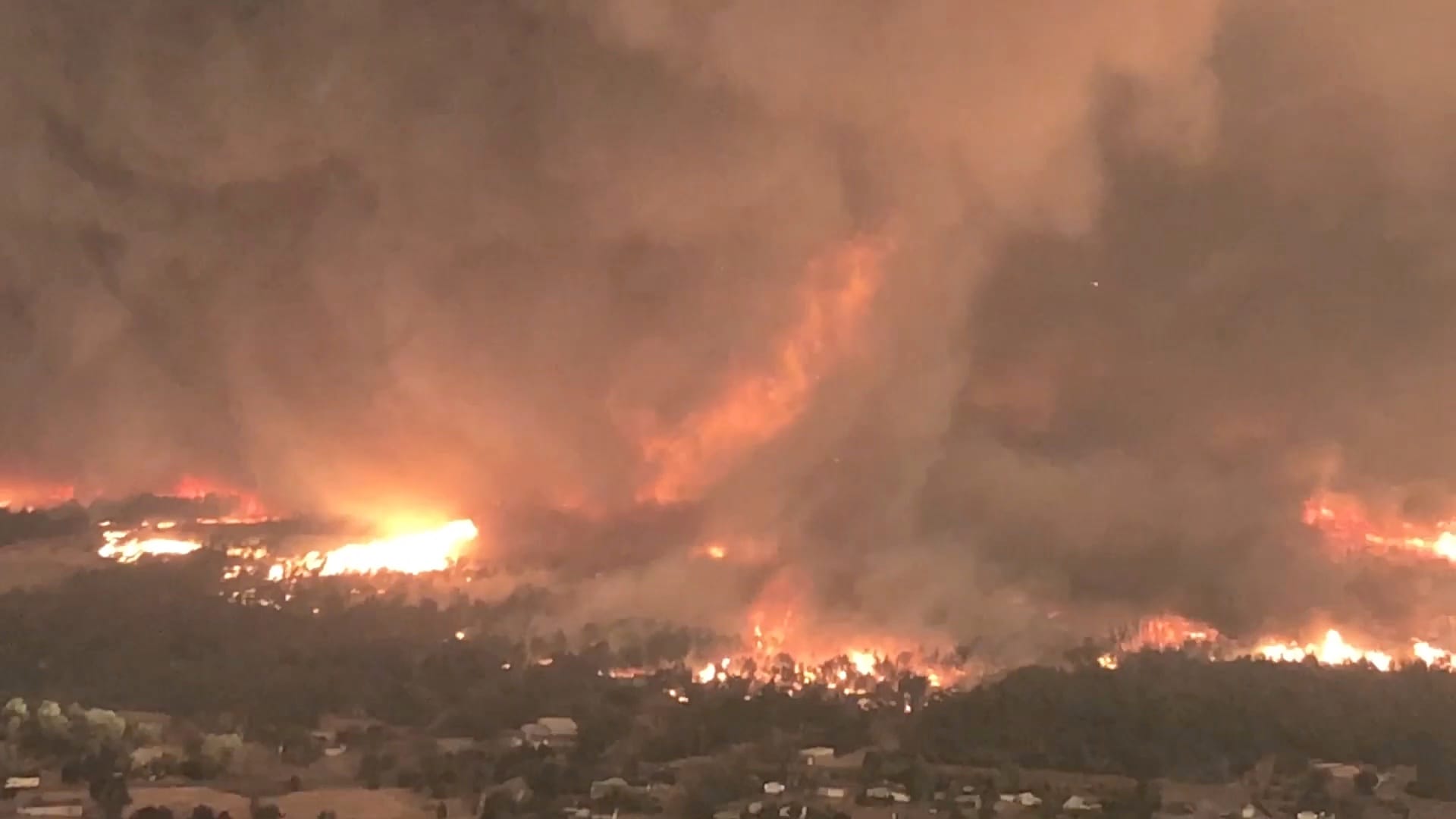
Everyone in California knows someone who lost a house, business, or family member. I grew up in the hot dry summers of the Northern Sacramento Valley and spent thirty years of my adult life in Sonoma County, California, where we’ve had multiple catastrophic fires since the North Bay October 2017 Firestorms that consumed over 150,000 acres, roughly 8,000 structures, and more than 40 human lives.
In addition to experiencing the Tubbs Fire firsthand, I’ve watched (and written about) devastating fires near where I grew up; The Camp Fire in Paradise, The Carr Fire in Redding, and most recently, I refreshed my Watch Duty App approximately 800,000 times a day while the 429,000 acre Park Fire that ignited in Butte County came within 2-3 miles of my childhood home in rural Tehama County—where my elderly dad still lives—in 2024. And apologies for the disaster opportunism here: I also co-edited Red Flag Warning: Mutual Aid and Survival in California's Fire Country, a book about living with fires (coming in June 2025 from AK Press); the book includes insights and tips from formerly incarcerated firefighters (one contributor to our book lost his home in Altadena), indigenous Californians, advocates for undocumented farmworkers who work their asses off during grape harvest season (which also happens to be fire season in the "Wine Country"), grassroots mutual aid networks, mental health professionals, fire survivors, parents and much more. There is so much we need to learn about living in the time of climate collapse.
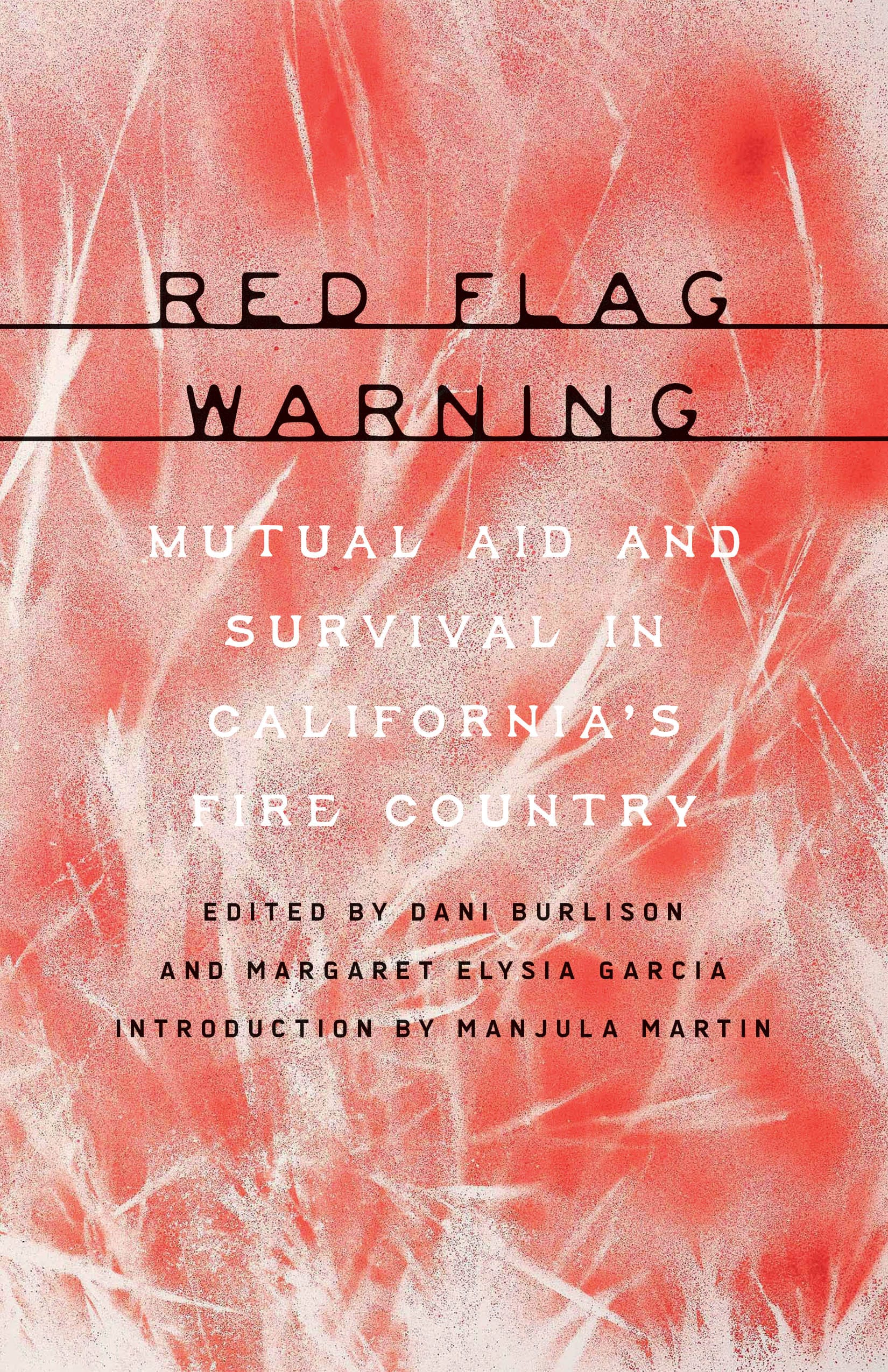
Now another place I lived for a short spell in my early 90’s grunge years of blasting Alice in Chains and sipping booze along Sunset Boulevard—Los Angeles—is burning, just days before I planned to move temporarily to Pasadena. I had hoped my sister’s place there would be the first stop in what I imagined would be a year-long odyssey of couch surfing and seeking radical community and purpose and affordable, non-burning housing for myself after getting priced out of Sonoma County.
While each fire chews away a little more of California and devastates the lives of people who lose their homes, their communities, their pets, and their family members, it triggers an intense collective grief and PTSD for people peppered throughout the west; during a pop-up mutual aid hub I was at in 2017, an acupuncturist there explained that in Traditional Chinese Medicine the lungs are where grief is stored in the body. She described how everyone she treated for smoke inhalation was not only dealing with physical ailments, but severe grief and sorrow—from the current fire, from past losses, from unresolved traumas—and that a sadness and hopelessness was permeating the community.
I personally know this to be true. The first major local fire I experienced shoved me directly into a mental health crisis (complete with the aforementioned mania) that took years to unwind from. But in addition to that heavy weight of grief and mental spiralling, fires also, for many of us, ignite a deep and seething rage about how the powers-that-be have utterly failed us. We slog through the compounding traumas of housing insecurity, climate insecurity, overly funded violent police forces, the dismissal of Traditional Ecological Knowledge, exploitation and violence against our undocumented neighbors, and our tax dollars (that should be used to build climate-ready communities, affordable housing, healthcare, food for all, and TEN MILLION OTHER THINGS) are being siphoned to fund an ongoing genocide in Palestine.
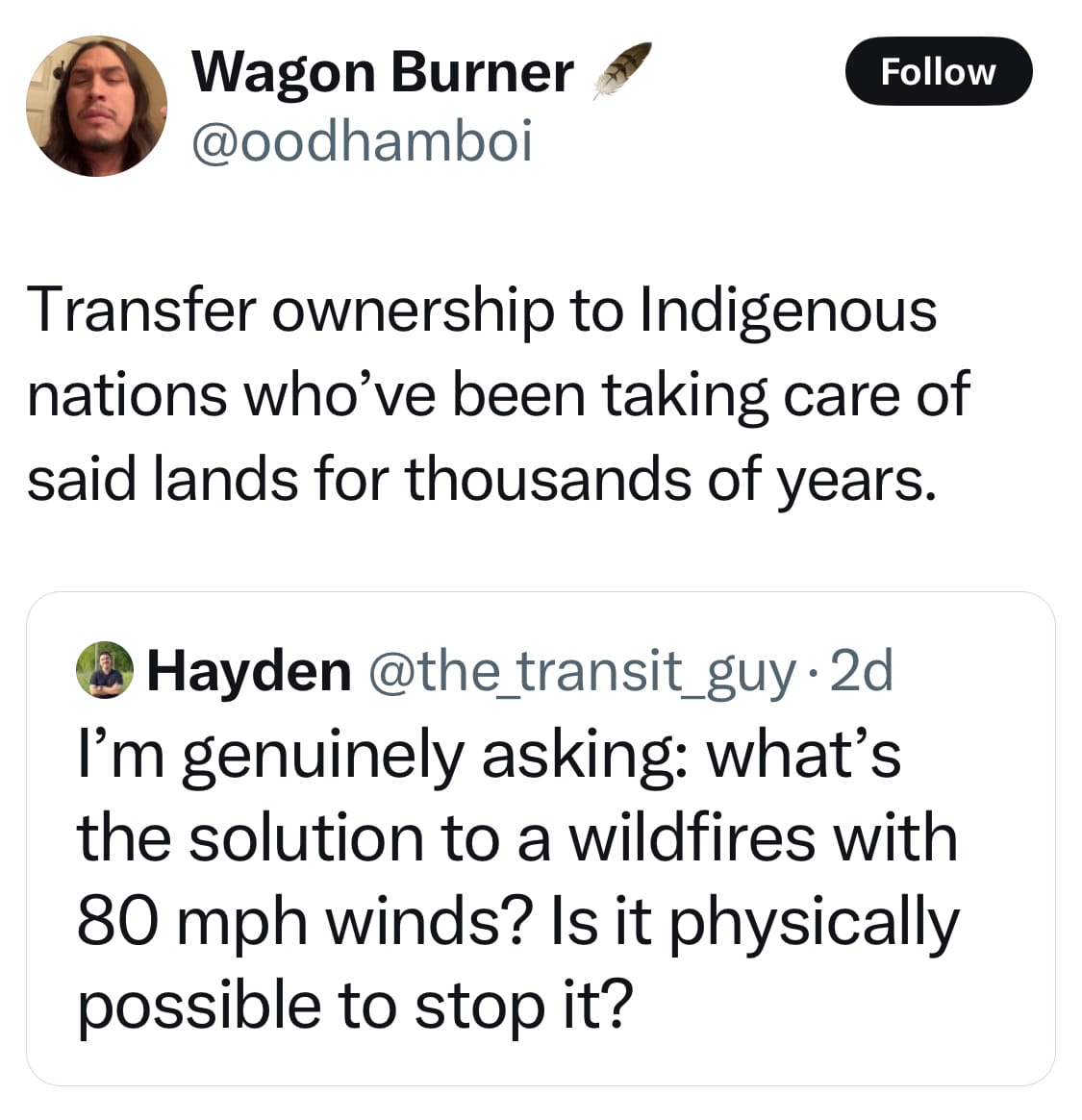
My anger at hearing that ICE is conducting raids in Southern California’s Kern County as the hillsides and canyons and palm trees and homes in neighboring Los Angeles County are blazing, my fury about rumors of the National Guard being deployed to stop looting when I heard that in Pasadena, the city screwed up a water safety warning, leading to all bottled water being purchased from the local grocery stores that did NOT burn down, and while Los Angeles has over 75,000 unhoused people living outside, breathing toxic fucking smoke from their beds on the pavement is... a lot.
So many hot takes claim that these fires are great equalizers. Yes, it is true that fires do not discriminate when it comes to which homes and neighborhoods they will blaze through, but climate catastrophes do not impact everyone equally. The disparities and barriers to services that exist before a fire are only exasperated when homes smolder. Evacuation centers need disability and language justice, they need to put protections in place for undocumented folks worried about ICE detaining them, they need to ensure that domestic violence survivors are safe (side note: incidents of domestic violence increase during times of climate disasters. Stay tuned for a story on this from me later). And my personal hot take is that unhoused folks should be offered beds at shelters, too.
And another compounding stressor to heap on top of the pile of things to spark rage: all over California, home insurance companies (State Farm, Nationwide, Farmers, USAA, and Allstate to name a few) have been canceling fire coverage over the past several years.
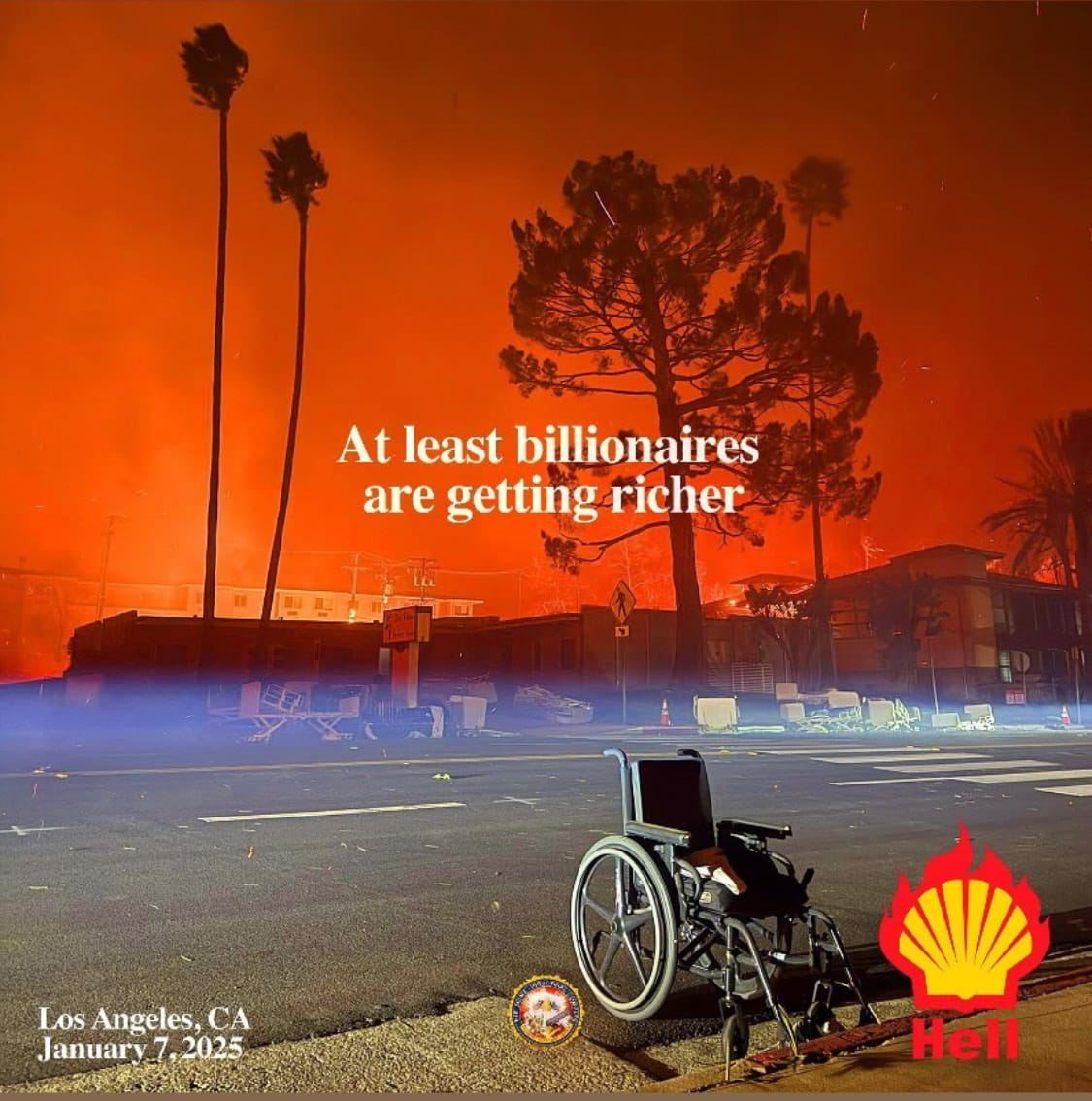
And then there’s the sensationalism highlighting the unimaginable trauma and loss of fire survivors when reporters from outside the impacted areas sweep in with zero knowledge of the people who actually live there. The catastrophes become a spectacle, clickbait of the most exploitative kind, microphones shoved towards the mouths of people sifting through the ashes of what was once a full and storied life. Just stop, ABC and CNN, you’re embarrassing yourselves.
In Red Flag Warning, my co-editor, Margaret Elysia Garcia wrote about the time “the Los Angeles Times did a four-part series of opinion pieces called “Rebuild Reburn” in which the two columnists who do not live rurally advocated for not rebuilding rural California when it burns because it costs the real California taxpayers too much, and we rural folks are just a bunch of hicks who don’t vote correctly anyway.” There is ignorance and classism in much of the reporting on fires. Mainstream media rarely understands why certain people live where they live; for a lot of us we live where we can afford and where we can build community., even if that means its on a dry hillside or forest. The reporters seldom, if ever, give credit to the countless mutual aid networks built of people who know their neighbors and are feeding, sheltering, and masking them.
So where do I, as a veteran of California’s Fire Country ™ turn to in the middle of these infernos? Where do I find resources? This is absolutely not a complete list but I'm including just a few quick links for where I usually head first:
GENERAL:
· Mutual Aid Disaster Relief is an incredible decentralized network with resources and folks doing on the ground work to keep people safe and fed and cared for, and the website has a list of regional groups. They also have this handy list on how to prepare for disasters
· The Watch Duty App is a must have for up-to-date information on California’s fires and evacuation notices, etc.
· Zeke Lunder at The Lookout is a gem. And so incredibly smart. He often does nightly YouTube livestream updates/reports during major California Fires and does an incredible job at explaining fire behavior and how it relates to weather patterns and the geoography of the region.
· Undocufund started in Sonoma County during the 2017 fires to support undocumented folks who are generally left out of government-based emergency disaster aid, but there are other similar mutual aid groups popping up around California (and I hope to see many more around the country).
· The Mask Bloc website has a directory of regional groups providing masks for smoke exposure (and of course Covid, which is still very much a thing).
· Frontline Medics has information on DIY air filters, tips for staying safe during fires and so much more.
· The Cultural Fire Management Council (CFMC) is a great resource for learning about Indigenous fire practices and why they are so important for living in a fire ecology.
· The Forestry and Fire Recruitment Program is a great organization to connect with to support formerly incarcerated firefighters.
SPECIFIC TO LOS ANGELES:
· This is a list of fundraisers for black families from Altadena who’ve been displaced by the Eaton Fire. Please donate as you can!
· National Day Laborer Organizing Network (NDLON) is fundraising to help immigrant workers impacted by fires in Southern California.
· LA Fire Mutual Aid Resources has a pretty thorough list of places and networks providing resources, from food to animal shelters.
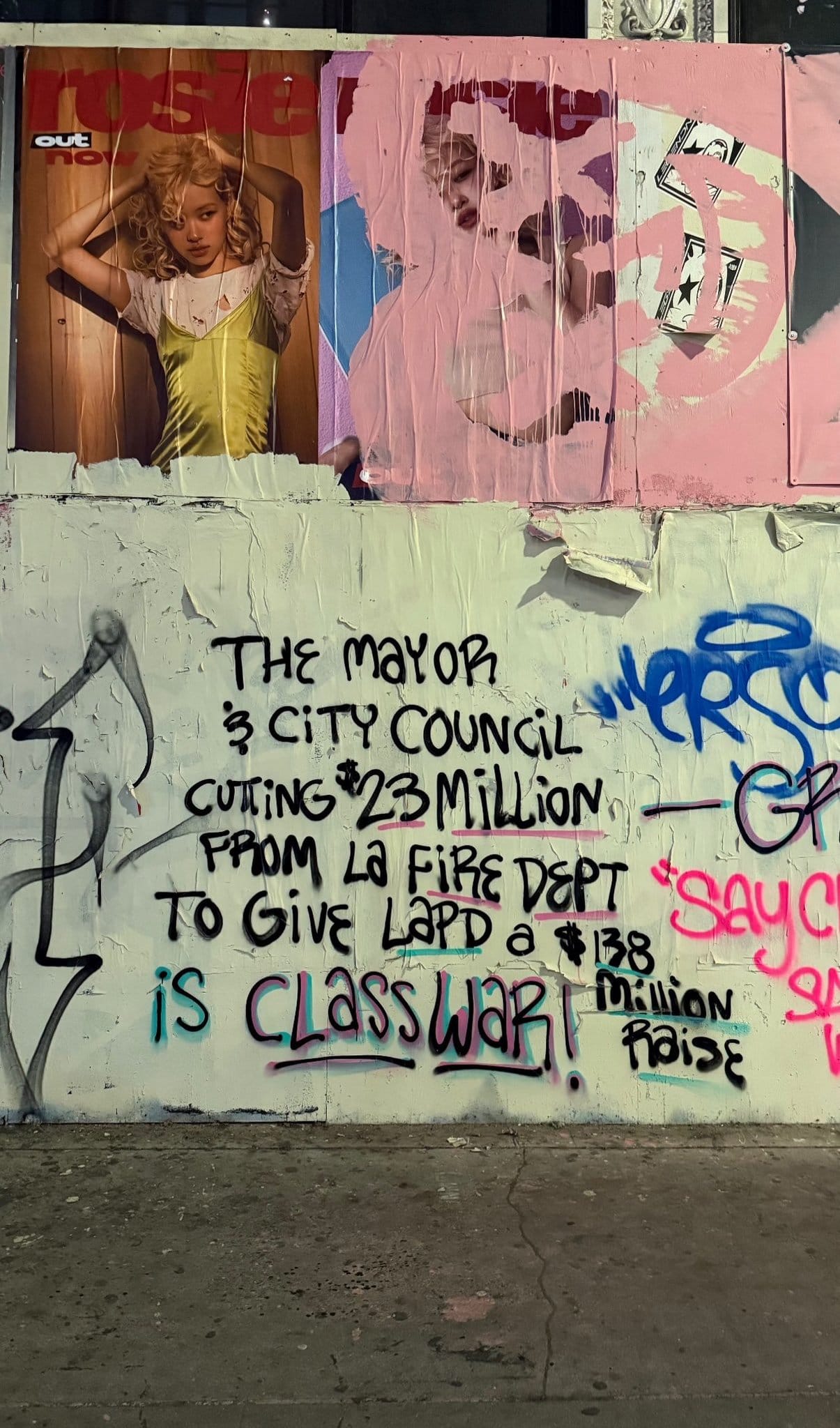
There is a scene in Parable of the Sower when they are walking Highway 20 through Lake County and both sides of the highway are engulfed in flames. Lauren can feel the heat on her skin as she maneuvers down the center of the two-lane road that curves through the burning land. I was rereading the book in 2015 when I found myself heading down that same stretch of road on my way from Tehama to Sonoma County during the Valley Fire. The smoke was thick and billowed toward me in heavy dark clouds. Visibility came and went as the wind gusts pushed the smoke back and forth through the hills. I wasn’t prepared for the intensity of it and my kids and I grabbed whatever scarves and sweaters were in my car to cover our faces. Our eyes burned. We coughed and coughed. Roads were closed and chaotic. It was terrifying.
But there was something I witnessed there that I will never forget: families gathered on the side of rural roads with empty horse trailers and homemade signs offering safe places to take pets and livestock for evacuees. As I sat in traffic, waiting to be directed through a detour, I watched people stopping to give out water, to hug weeping adults and children arriving with their horses and goats. Just everyday people doing what they could to care for their community, to ease that mania and grief even if just in that moment. It was early September and I remember the sun setting, and despite the smoke, that golden sunset and community care was one of the most beautiful things I’ve ever witnessed. I will never ever forget that scene as long as I live.
Yes, fires have again derailed my personal plans and I’m currently in limbo. But unlike thousands in Southern California, I am fine: My mania is under wraps for now. I don’t have a house to burn down. I have a grown kid’s couch to curl up on some nights, and the safe warm bed of a caring lover to slip into on other nights. My cherished belongings (my kids’ childhood photos and art projects and school reports on Woody Guthrie) are safe in a small storage unit in a non-fire prone neighborhood in Santa Rosa. The air here—for now—is clear and safe to breathe and I'm inhaling deeply and often before I head south. Still, the residual climate trauma nestled in me gets poked at like some kind of sleeping messy, feral thing when flames are anywhere in my beloved, complicated and increasingly unaffordable Golden State.
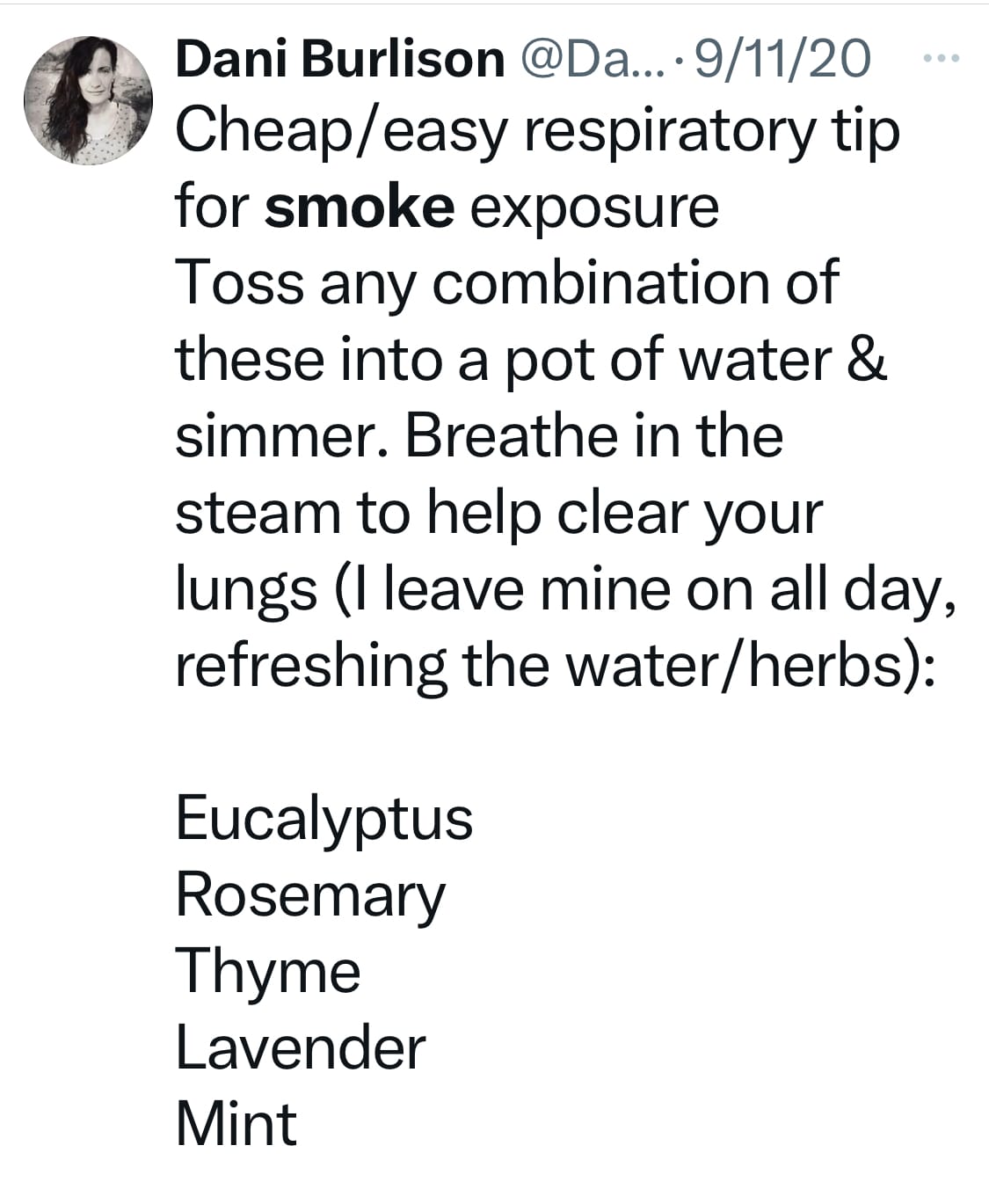
It is so easy to be all-consumed by the rage (I battle it like 500 times a day), to lose sight of the fact that every time a climate catastrophe hits, we have an opportunity to build the world we all deserve to live in. So many times in recent years I’ve returned to this passage in Parable of the Sower: “That’s all anybody can do right now. Live. Hold out. Survive. I don’t know whether good times are coming back again. But I know that won’t matter if we don’t survive these times.”
I know it feels ridiculously fucking impossible some days but I do, in my angry, weepy little sensitive and tattered heart, believe that we owe it to each other to survive these times. Or at least to try, to give it everything we can muster. We just have to. Of course we don't have to (and shouldn't) do this all alone, but we only get a better world if we survive and create a new one by and for ourselves.
